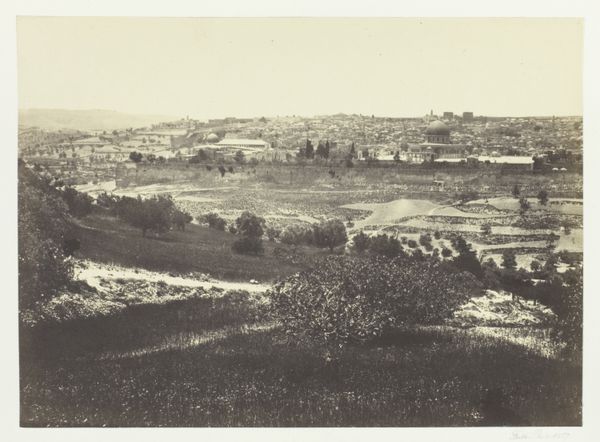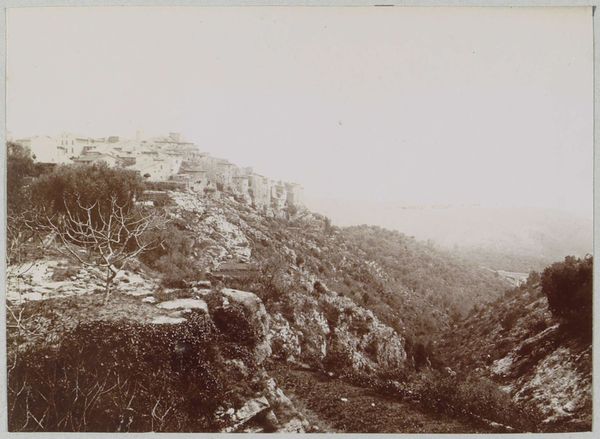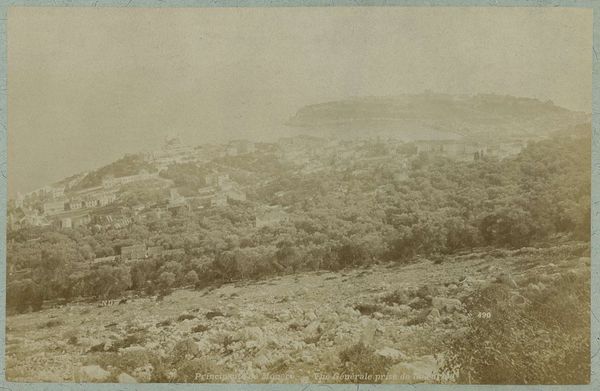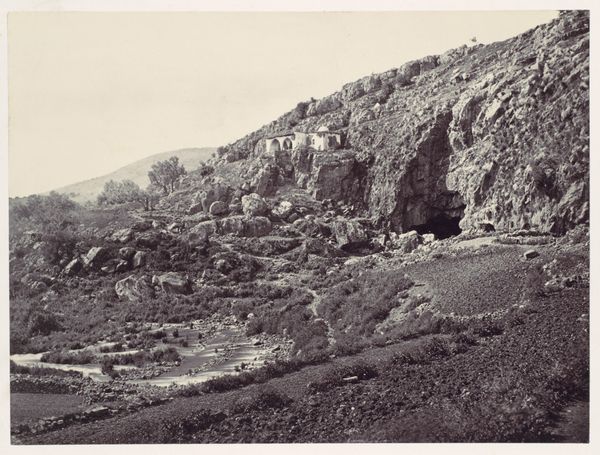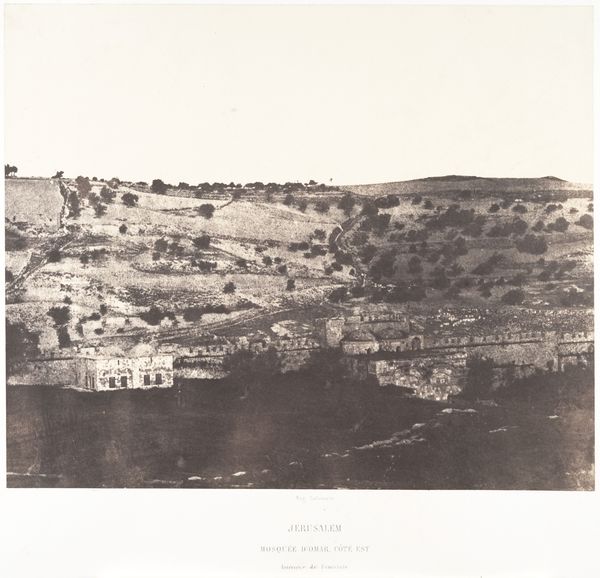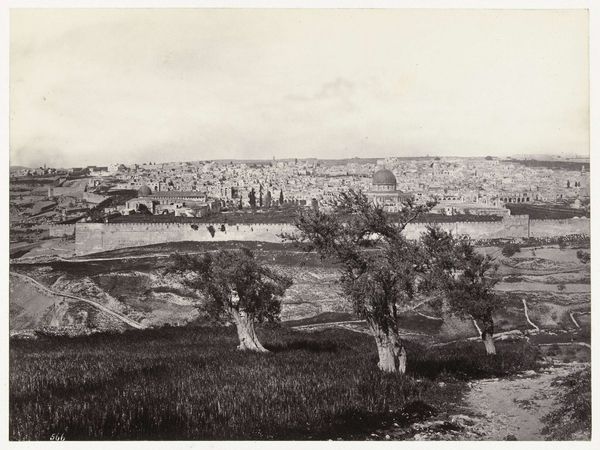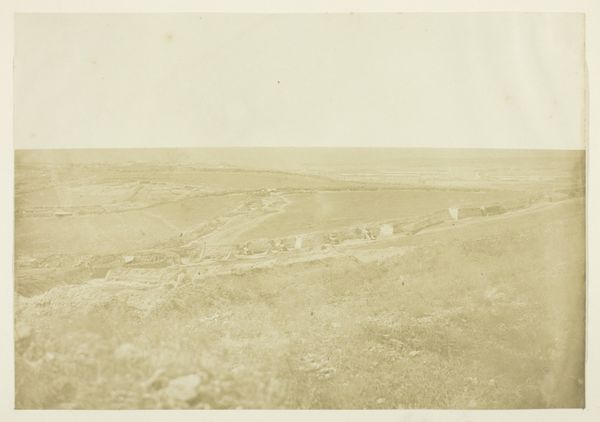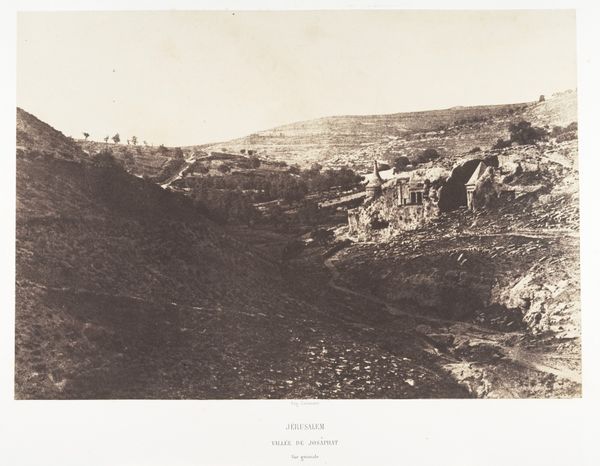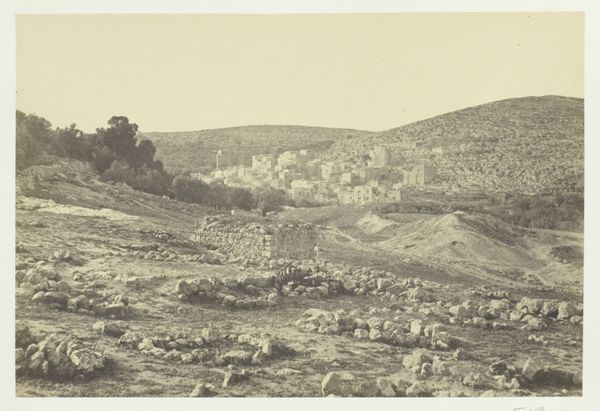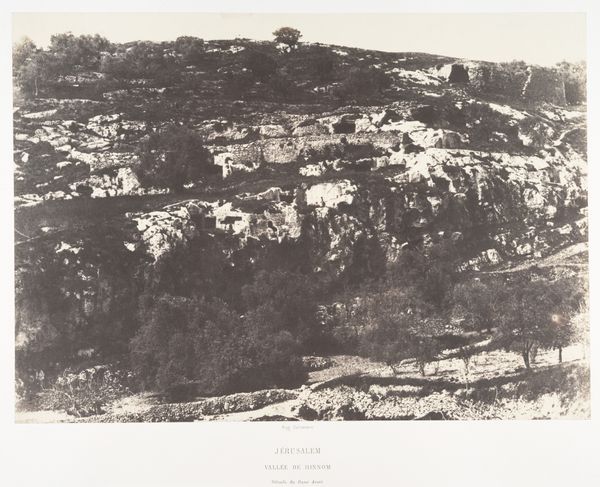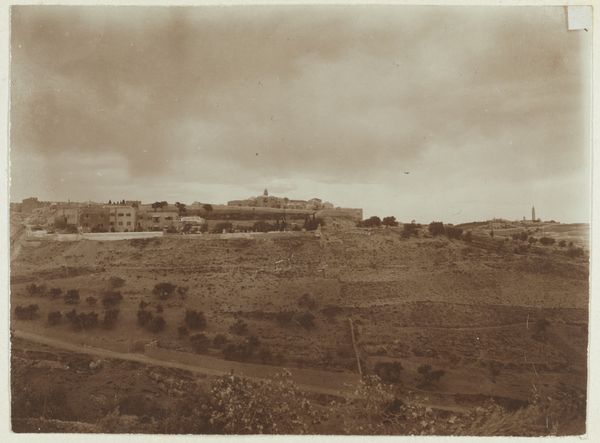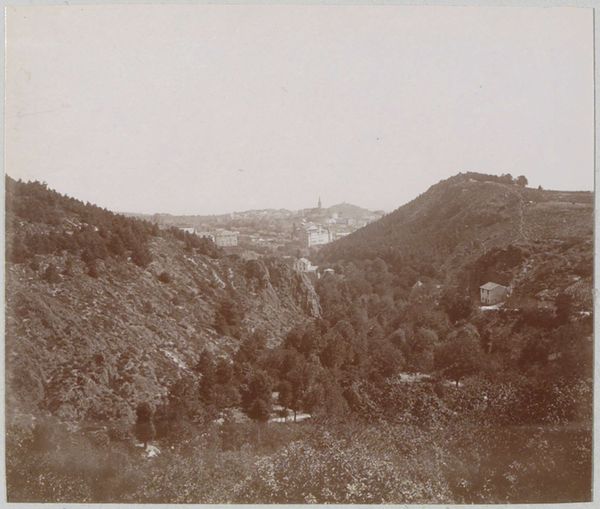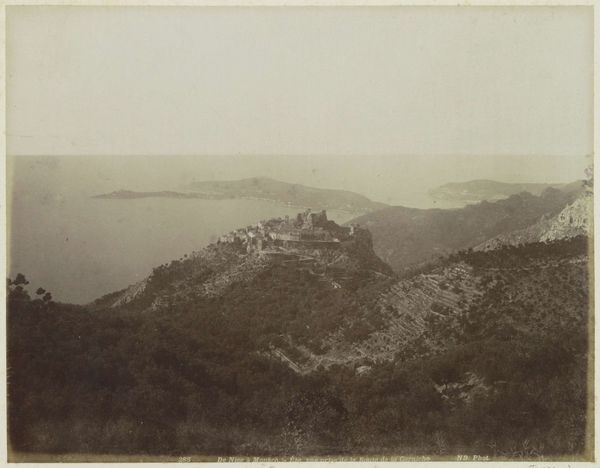
Copyright: Public Domain
Curator: Francis Frith's "Bethel," created between 1855 and 1859, presents us with a panoramic gelatin-silver print. The original is housed right here at the Metropolitan Museum of Art. Editor: It's so still and melancholic. The greyscale palette gives it a ghostly feel, like peering into the past through a faded window. I’m also drawn to the compositional elements. The artist seems to deliberately position the vantage point, with the foreground providing stark contrast to the blurred vista. Curator: The choice of "Bethel" as a title is quite purposeful, resonating biblically. "Bethel" translates to "house of God" which might give you a hint of Frith's intentions for the photograph as something symbolic. Editor: It feels as though Frith’s staging a sacred space, suggesting a profound connection between the physical landscape and faith. Was it intended to legitimize colonial occupation? Curator: That's a complex angle. While Frith did photograph extensively throughout the Middle East and documented sites mentioned in the Bible, we have to also consider the socio-political forces at the time of the work. Photography played a critical role in the West’s construction of the East. Editor: Right. It provided visual 'proof' and solidified power dynamics during the height of colonialism. Looking at the detailed patchwork of land divisions within the photographic vista and also thinking about access and representation – how often were indigenous populations given a voice within these landscapes, versus the selective framing of external observers? Curator: These photographs often reinforced dominant narratives. Frith, in particular, became commercially successful selling these kinds of landscapes. The imagery he made available widely influenced the perception and appreciation of these regions back in Europe and North America. Editor: The visual echoes across time and space are hard to ignore. It makes me consider what kind of historical layers exist in a place and its cultural representation, not just its physical topography. Curator: Exactly, so it is important for institutions like ours to keep prompting conversation about images, their past and their present-day effect.
Comments
No comments
Be the first to comment and join the conversation on the ultimate creative platform.
